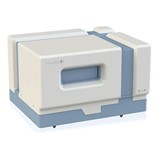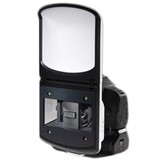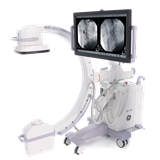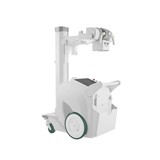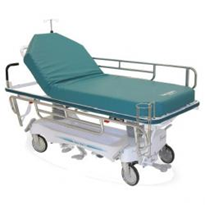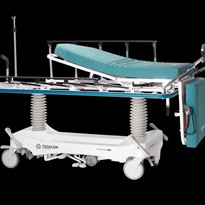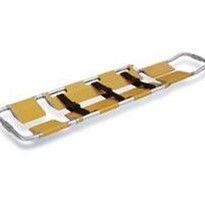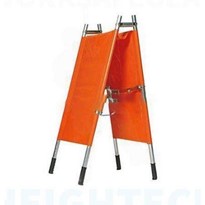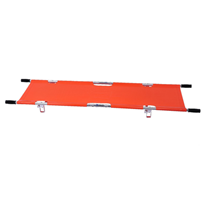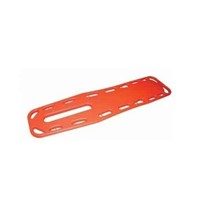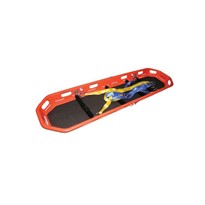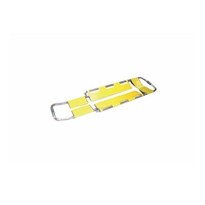In this article you’ll learn about some of the variables that can ultimately affect the prices of stretchers in today’s market.
Now let’s try our best to answer the most common question we get asked? Cost.
How much does a stretcher cost?
Typically, stretchers can average anywhere between $5,000 to $12,000 each; however, these prices can dramatically differ depending on the level of customisation required.
How does design affect the price?
Patient transport trolleys cost more than standard hospital beds, as they are built in much lower volumes and are specially designed to be more compact and lighter in weight, while meeting specific strength and impact requirements for best patient transportation. Transport stretchers are available in very basic patient examination platforms at costs as low as $4000 and as high as $28,000 to bespoke bariatric products. These are fully accessorised to meet the specific departments unique requirements.
Typically, in medium sized hospital departments (such as day surgery and emergency), they can expect to pay anywhere between $7000 - $10,000 per unit. Costs can range outside of this depending on the specific configurations and choices of accessories that best meet the efficiency and procedure requirements.
What is your facility size and location?
Price will always vary from smaller medical entities to large healthcare facilities. This is mostly affected by volume, where large departments will require significant numbers of exactly the same unit bringing more economy to scale in both the product configuration and freight advantages. While contracts are traditionally used to stabilise or drive price competitiveness through larger expected volumes across buying groups, territories or extended periods of time, this can be challenging for many manufacturers and suppliers as the ‘actual’ costs of varying sized orders and delivery locations doesn’t change. This may be met by building in extra hidden costs such as market fluctuation risks, quantity discounts and freight zone pricing.
How does technology affect the price?
Hospitals are purchasing more costlier models that have complex features, such as powered drive systems, compatibility with X-ray imaging devices, IT adaptations or weigh scales, to name a few.
Electric drive systems will increase the price of stretchers through the additional electronic hardware and power supply requirements. This could add at least $5,000 - $7,000 extra cost to your stretcher, which can vary depending on the system offered. Outcomes can range from simple one direction drive with basic controls to exceptional multi-directional powered movement with intelligent control systems. This needs to be weighed up against the costs of using powered bed movers which may be more cost effective where there are large numbers of products to be moved; however the risks associated with staff injury could be affected by the accessibility of power assisted movement at the time that it is needed most.
Technological accessories ultimately suggest that higher costs can be involved however, it is solely up to the facility and those in charge if the benefits outway the costs.
Why is freight important?
This can have a significant impact on the cost of your product, which varies widely depending on your location of inner city or more distant regional locations, and if the product is locally made (within Australia) or imported via international shipping routes. Always check, as freight may not be included within your quoted price and could create large differences in your preliminary comparisons and final cost expectations.
Typical costs for a single unit freighted within Australia to a city metro area can range between $300 - $600 each, depending on where it is shipped from. Regional areas could cost over $800 per unit while some far outlying areas can control their costs via their own internal supply arrangements.
Does the manufacturer matter?
The price of patient transport stretchers can be quite varied based on the type of manufacturer building the products and how they achieve this. A product can be cloned off lower cost, higher volume designs such as traditional ward beds, which will generally bring a lower priced and more standardised box model with limited flexibility.
Alternatively large global corporations may invest significant amounts of time and development costs into a small number of products to deliver world class solutions, which typically will command a higher price based on the perceived power of the brand and the recovery of initial outlays. Higher flexibility and customisation will usually cost more on stretchers, due to the ‘human’ factor of bespoke communication and hand building. Labour is another genuine consideration, based on the location of the manufacturing and assembly, it can affect final pricing.





-160x160-state_article-rel-cat.png)












